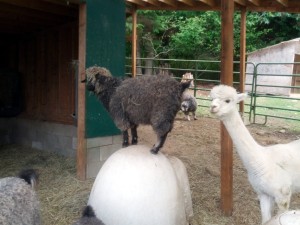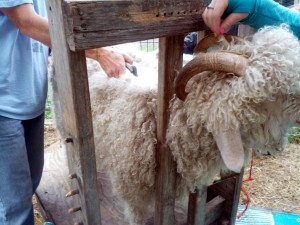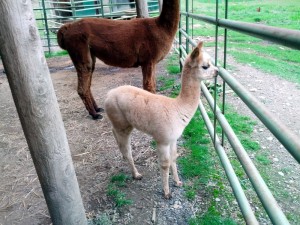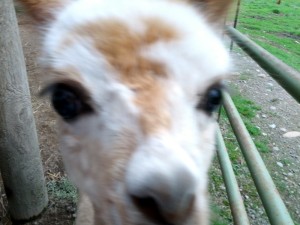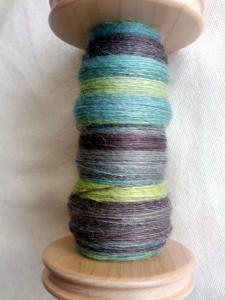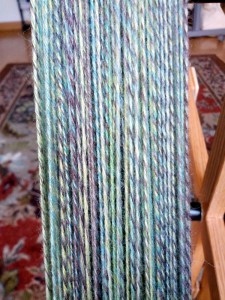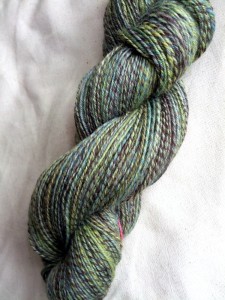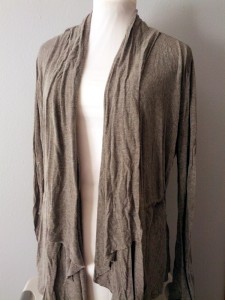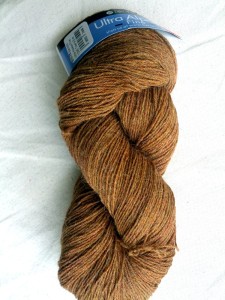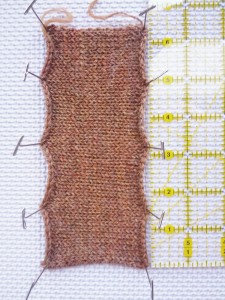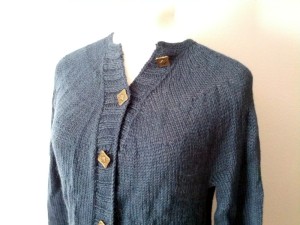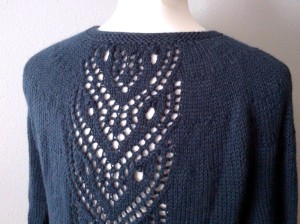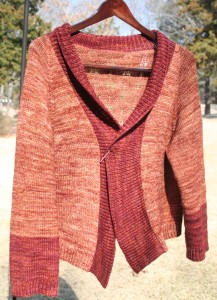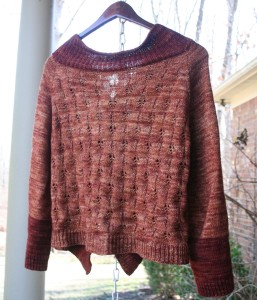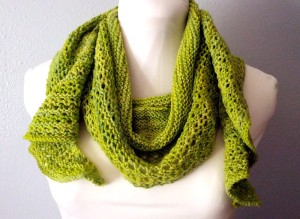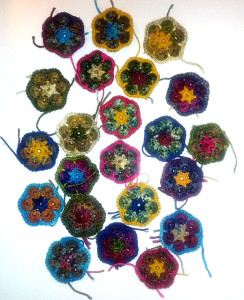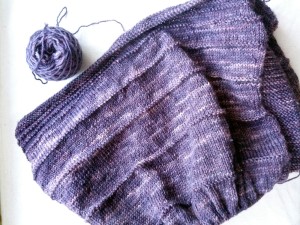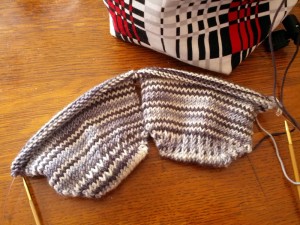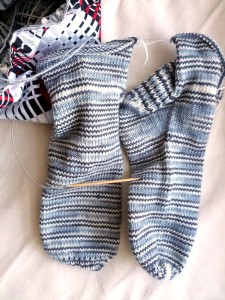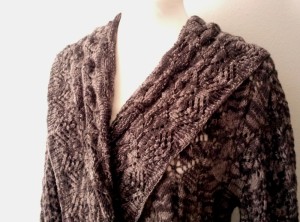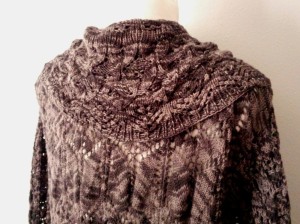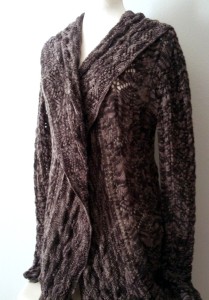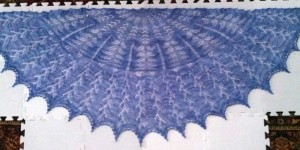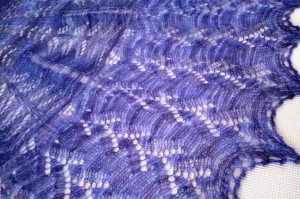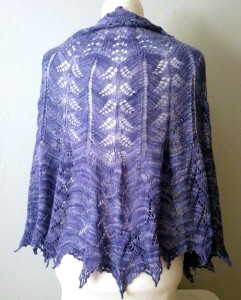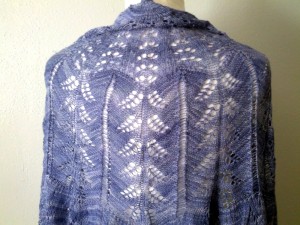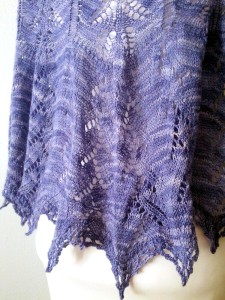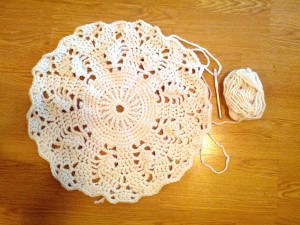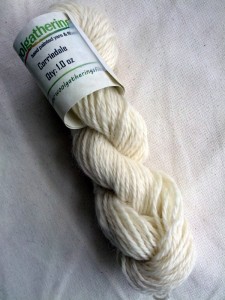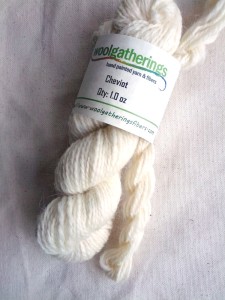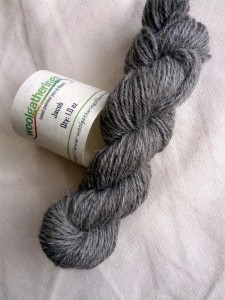Have you ever encountered a thing that’s too scary to try? I don’t mean physically scary, like jumping from an airplane if you’re afraid of heights. I’m definitely too scared to try that one! I mean the fear-of-failure type of scary. Like you don’t know if it would work. Or you think you don’t know enough yet, or have a good handle on the concept, to be able to pull it off well.
We’ve all been there. The first day of painting class, or knitting class, or spinning class. Or the first time you try something new. What if your crafty/artsy mojo decides to take a day off? What if you can’t get it? What if you totally screw it up? Or there’s the scenario where you picked a project you thought would be just a little bit of a stretch. But then it turned out to be a bigger “learning experience” than you’d planned.
Some folks let this type of scary thing stop them. They continue to practice for years, getting really good at it, taking baby steps – until something or someone comes along to push them into the next level of work. Slow and steady wins.
That’s not me. Especially when it comes to working with my hands. (I can also give you a huge number of examples of this in my professional life too.) I experiment, try new things, figure out all the ways to fumble around and mess it up, then figure out how to fix it and make it better. Sometimes the experiments work out well, and sometimes they end up in the Frog Pond. Yes, in the interest of full disclosure, there’s a Frog Pond for my needlepoint, embroidery, painting, drawing, and sewing projects. I bet you have one too.
A lot of the time I skip “steps” in my education. You know, the “steps” that those who’ve been doing the thing forever think you should take to gain mastery over the thing yourself. My best mentors were the ones who thumbed their nose at those people. When I started crocheting, I jumped in with miles of afghans (why start at a scarf?), and then I tackled a custom design-as-I-go wedding dress. When I learned to knit, I went from a single scarf, right to sweater, to socks, to lace shawl, to custom designs. Again, not everything turned out to be a work of art – there were lots of frogs along the way. But this is how I learn, and keep myself from getting bored.
So what’s the latest scary thing for me? Spinning. And I’m having a blast with it, like I knew I would. (That’s exactly the reason I held off on trying it for so long – I knew I would get addicted to it.) Over the last year you’ve seen me try spinning with a bunch of different wool and wool blends. I’ve also tried different color blending techniques. And over that time I can actually see my spinning improve – it’s there in the photos – each finished project better than the last.
And I can tell that I’ve reached a consistent quality in one critical area of my spinning. I can consistently spin to a chosen gauge (thickness). Now I’m ready for a big push. To skip to the next level. To try something outside of my comfort zone. I’m ready to spin a larger quantity of yarn with a specific project in mind.
A shawl, you say? Or maybe a matching hat and mitts? Nope, I’m going for sweater quantity. Big. Like 1500-2000 yards big.
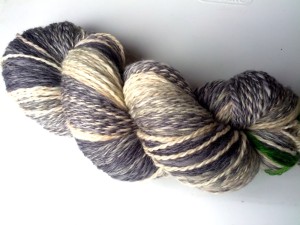 To give you a comparison, this spinning project (photo above) resulted in ~400 yards of yarn at the gauge I’d like to achieve for the sweater project. So really, all it means is spinning like that for longer, with a few small modifications – I want my sweater yarn to be 3-ply instead of 2-ply.
To give you a comparison, this spinning project (photo above) resulted in ~400 yards of yarn at the gauge I’d like to achieve for the sweater project. So really, all it means is spinning like that for longer, with a few small modifications – I want my sweater yarn to be 3-ply instead of 2-ply.
To break it down even further – I’ll be spinning 1500-2000 yards of singles, three times (x3), then spinning that amount again to ply them together. (2000 x 3) + 2000 = 8000 yards of spinning or ~4.5 miles. (Do you think I’ll burn any calories on that spin?) Of course, I won’t be doing all that work in one sitting. Just like knitting the sweater, it will take me several weeks to complete this spinning project. But, as we all know, little bits of work here and there add up.
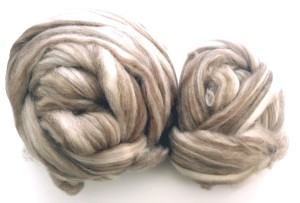
Last year I stashed 12 ounces of 100% BFL fiber in a heathered oatmeal color for just this eventuality. So the other day I got it out and pulled off about 1/2 ounce to use for sampling. Every good spinner works up a sample before spinning a large quantity to make sure the finished result will resemble what they were trying to achieve. I split that little bit of fluff into three equal sections and spun each at 1/3rd of my target gauge onto a separate bobbin. I then plied the three singles together, and washed the resulting yarn to set the twist.
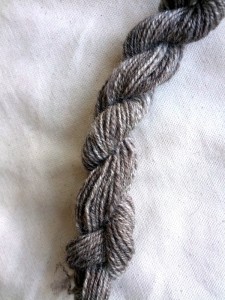
What I ended up with was bang on target. My project needed a yarn roughly within the sport or DK weight range. The wraps per inch (WPI) on the yarn is somewhere in between the two, depending on which “industry” WPI/yarn weight chart you consult. The streaks of brownish-grey and creamy white blended together to an overall mid-tone grey-brown. Win on all fronts!
Now for the real test: the knitted swatch.
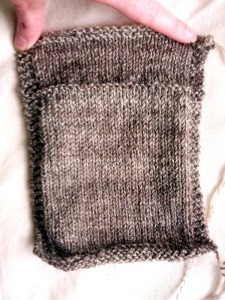
Again, what I ended up with was right on target. The stitches are even, the yarn color does not vary too much or in strange patterns, the fabric is drapey and soft, and the stitches per inch gauge matches the gauge listed for the sweater. One of the knit girls said it looked like commercially spun yarn. I’m trying not to let that go to my head.
So I’m emboldened to continue, with no changes to the plan at this time. (I bet the slow-and-steady folks are cringing right about now.) Next step: split the fiber into manageable sections and get spinning!

